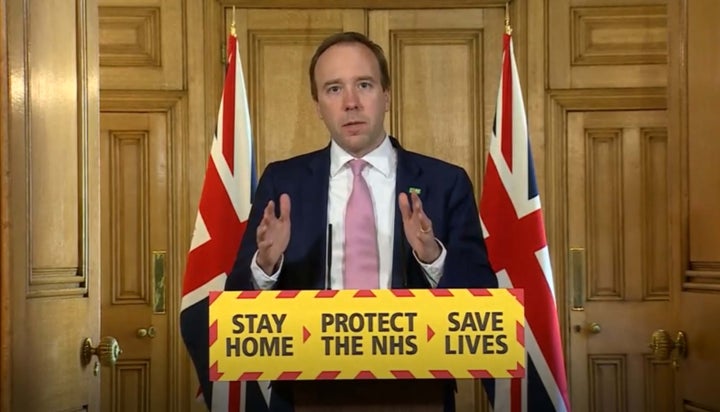“You cannot fight a fire blindfolded, and we cannot stop this pandemic if we don’t know who is infected,” World Health Organization Director-General Tedros Adhanom Ghebreyesus said last month. “We have a simple message for all countries: test, test, test.”
Many nations failed to heed that advice during the early days and weeks of the coronavirus pandemic. But as countries around the world begin to ease their lockdown restrictions — or contemplate doing so — widespread testing has become a central pillar of plans to ensure that social and economic activity can resume without allowing the virus to surge back.
“The availability of large-scale testing that can provide fast and reliable results is key to tackling the pandemic, and also a precondition for lifting social distancing measures in the future,” the European Commission states in its roadmap for easing coronavirus restrictions, published on Wednesday.
Many countries, including the United States and the United Kingdom, are still struggling to increase their testing capacity, however. And without more tests, countries may face a stark choice between maintaining their lockdown measures for longer periods of time — perhaps for months — or restarting their economies without a comprehensive system for monitoring and containing outbreaks, a decision that could risk thousands of lives.
On Thursday, U.S. President Donald Trump is expected to announce new guidelines that would allow some states to ease social distancing measures, but some business leaders have pushed back, warning that testing capacity must increase dramatically before people can safely return to work.
Public health officials in Italy have acknowledged, however, that waiting until the pandemic is fully under control may be unrealistic.
“It’s clear that if we close everything, as was done in Wuhan, transmission of the virus would be cut down. But I believe that no western country can do this — let alone Italy,” Giovanni Rezza, director of the Department of Infectious Diseases at the Ministry of Health, said on Wednesday, per HuffPost Italy. “So we have to plan a sustainable reopening, which will require accepting a certain level of risk. We can’t say, let’s wait until there’s zero risk to start our lives again.”

Expanded testing is a key component of “phase two” of Italy’s pandemic response, when restrictions can start being lifted, said Silvio Brusaferro, the director of Italy’s national health institute.
“In phase two, we would like to extend the testing across the country to find those who are infected as early as possible — including those without symptoms,” Brusaferro said.
Already, this week, Italy allowed certain nonessential businesses to reopen, including bookstores, stationery shops and children’s clothing boutiques.
At the moment, however, some health professionals think the numbers don’t add up.
“It is nonsense,” Davide Manca, a professor at Milan’s Polytechnic Institute, told the Agence France-Presse. “Conceptually, I am skeptical.”
In order for testing to help identify outbreaks in the general population, people need to be tested regularly — at least once every two weeks, Manca said. However, Milan’s Lombardy region has 10 million residents but has only been conducting 6,500 tests a day. At that rate, it would take more than five years for every resident to be tested even just once.
“Even if you raise that number 10 times, that would still take 200 days for one test,” Manca told the AFP. “That’s six or seven months.”
In the United Kingdom, government officials have similarly emphasized testing as a vital part of its plan to combat the coronavirus.
“It’s a big part of how we’re going to defeat this disease,” U.K. Health Secretary Matt Hancock said earlier this month.

Hancock set the challenge on April 2 for the U.K. to administer 100,000 COVID-19 tests a day by the end of the month.
But with just two weeks to go until the deadline, the country is less than a fifth of the way toward achieving this goal, HuffPost U.K. reported. Since its pledge, the government has added only a few thousand to its capacity: On Monday, a little over 15,000 people were tested.
U.K. officials have said that testing capacity is increasing all the time, and that the country is still on track to meet its 100,000-a-day target. But even as it ramps up the number of tests that are available, thousands of tests are going unused each day, HuffPost U.K. reported, even as frontline health workers say tests are urgently needed.
Even Germany, whose aggressive approach to testing and relatively low death rate from the coronavirus has made it a model for many countries, may need to increase its testing capacity even more as it contemplates easing lockdown restrictions.
The country has been able to conduct up to 500,000 tests a week, but scientists advising the government said it must increase that capacity even further — to more than 1 million tests a week, or more than 200,000 per day.
With reporting from HuffPost Italy and HuffPost U.K.
- Stay up to date with our live blog as we cover the COVID-19 pandemic
- What happens if we end social distancing too soon?
- What you need to know about face masks right now
- How long are asymptomatic carriers contagious?
- Lost your job due to coronavirus? Here’s what you need to know.
- Everything you need to know about coronavirus and grief
- The HuffPost guide to working from home
- What coronavirus questions are on your mind right now? We want to help you find answers.
- Everyone deserves accurate information about COVID-19. Support journalism without a paywall — and keep it free for everyone — by becoming a HuffPost member today.

